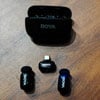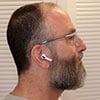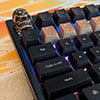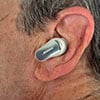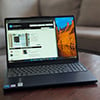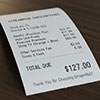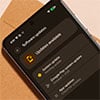At Samsung Unpacked, the company revealed its latest flagship smartwatches, which bring even more health tracking capabilities to an already packed slate of features. The watches also feature a new design language overall, inspired by last year's Watch Ultra, but in a more svelte package. I was able to go hands-on with the watches this year and see what's new.
Samsung Galaxy Watch8 and Watch8 Classic
Right off the bat, you'll notice a slight redesign in the bezel of the smartwatches. Both watches have what Samsung calls the "Galaxy Cushion" (the square part) with the round watch face on it, evocative of the Watch Ultra from last year. Like previous years, the Classic version of the smartwatch is the larger of the two and features the rotating bezel we all know and love.
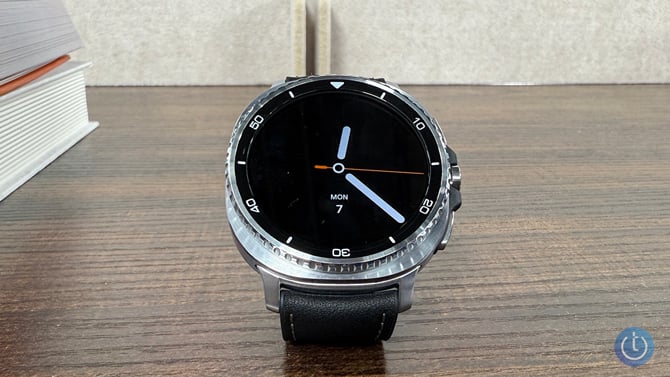
Samsung Galaxy Watch8 Classic
Samsung also redesigned the lugs for the watch, using a proprietary snap-on system, similar to the Watch Ultra last year. This lug system lets the watch rest flatter on your wrist for more comfort and better sensor readings.
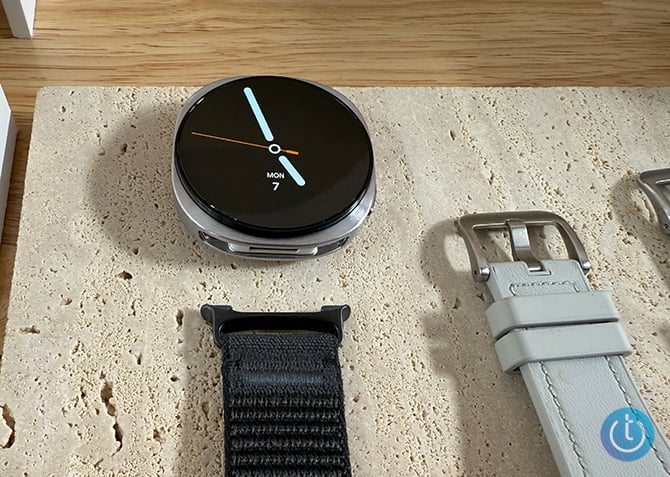
Samsung Galaxy Watch8 with watch bands
Speaking of which, the company also redesigned the sensor pack on the bottom of the watch so it's less thick than last year's, which was a pretty big dome. Overall, Samsung made the watch 11% slimmer than last year's wearable.
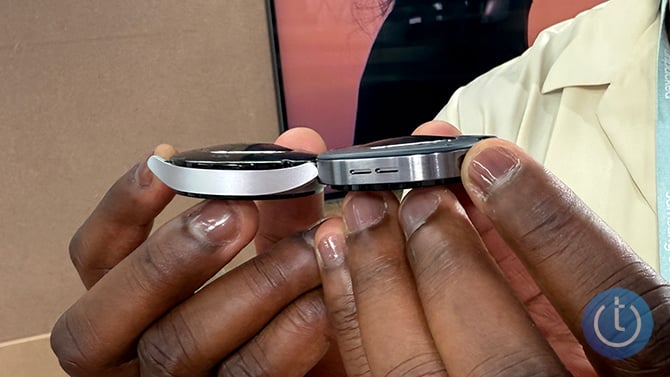
Samsung Galaxy Watch7 is on the left and Samsung Galaxy Watch8 is on the right.
The new feature is the ability to scan for antioxidants in your skin. Basically, you can press your thumb up to the sensor on the back of the watch and scan for antioxidants. The software returns a value that shows if you need to eat more vegetables or not. Spoiler alert: I do. This feature will start only on the Watch8 and Watch8 Classic. According to a Samsung rep, the company is still evaluating the sensors on older hardware to see if it can get the reading it needs to roll it out – probably best to assume no until you hear otherwise.
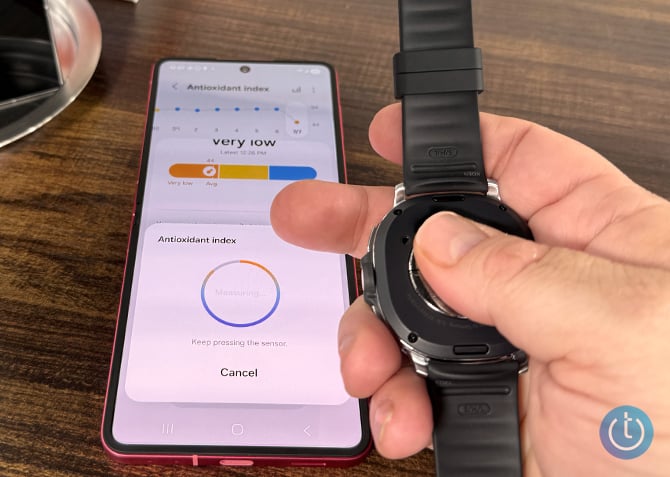
A thumb is pressed to the back of the Samsung Galaxy Watch8 to measure antioxidant levels.
To be honest, it's not amazing that you need to remove the watch to take this sensor reading – it feels like too much friction, except for those who are truly concerned with antioxidants, which I'm going to go ahead and label as "niche". All the same, it's there if you want it, along with all the health features Samsung has had in the past, like sleep tracking (along with the accompanying Sleep Animal), run tracking, and the like.

Samsung Galaxy Watch7 is on the left and Samsung Galaxy Watch8 is on the right.
Samsung is also rolling out OneUI 8 for the watches, which brings a few notable improvements to the watch face, including AI, because, of course, it does. The Galaxy Watch8 and Watch8 Classic will be the first Wear OS smartwatches to ship with Gemini on board. Also, on your watch face, you'll get Samsung's Now Bar and Now Brief, which is a natural addition to the watch face. Its compact nature allows it to be discreet but actionable.
Read more: This Samsung Update Could Change How You Use Your Phone
Finally, Samsung announced the latest iteration of the Watch Ultra, which it is calling a 2025 refresh. It's not capital-N new, but it comes in a new colorway – Titanium Blue, which is a lovely color, and it now has 64GB of onboard storage.
The Watch8 will be available in 40mm and 44mm sizes, with prices of $349.99 and $379.99, respectively. The Watch8 Classic will be available in just 46mm and will sell for $499.99 for the Bluetooth-only version or $549.99 for the LTE version. The Watch Ultra 2025 retains its $649.99 price tag.
[Image credit: Adam Doud/Techlicious]

